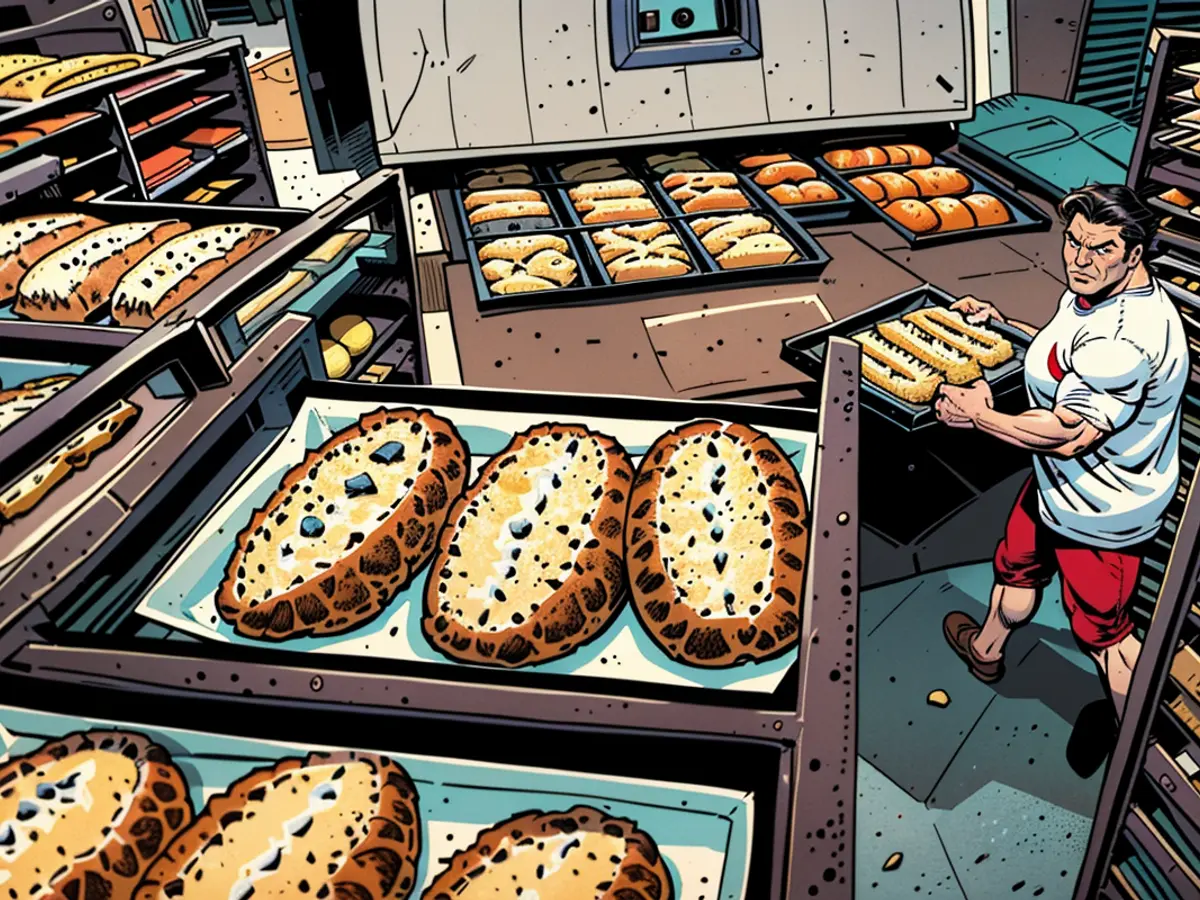- The season of stew in Saxony begins: "The baking is diligent"
Despite the summer heat, Saxony's Christmas cake bakeries have already kicked off the pre-Christmas season. At the Annaberg bakery, employees took the first Christmas cakes out of the oven on Wednesday. These are intended for business partners who will be supplied from the beginning of September, said managing director Martin Hübner. "Then production will be gradually ramped up." Full speed will be reached in September.
"Baking is also in full swing in Dresden's Stollenland," said Karoline Marschallek, managing director of the Association of Dresden Stollen. Some of the larger bakeries have already started in May. The smaller ones join in late August, and the very small ones at the end of September. Baking will continue right up to Christmas to meet demand.
Highest demand in Advent
Dresden's Christmas stollen are available in retail from the end of August, but sales only pick up later in the year. The most stollen are bought on the first two Advent weekends and just before Christmas Eve. Last year, around 5 million Dresden stollen found their way to customers.
The Annaberg bakery, with its 140 employees, won't produce quite that many, but Hübner aims to produce 200 tons of the popular treat by Christmas. The stollen are popular not only in the region but all over the world. Packages have gone to the USA, Britain, Austria, Switzerland, but also to Asia and Africa, according to Hübner.
Besides the classic butter stollen with raisins and the alternative with almonds instead of raisins, Hübner says the poppy seed and apricot varieties, which are only available from November due to their shorter shelf life, are also popular. The chocolate and honey stollen with ginger and chocolate topping are also well-received.
Due to the sharply rising costs in many areas, customers can expect price increases this year as well. However, Hübner could not yet say exactly how high these will be.
Tip for hobby bakers: Stollen baking courses
Everyone has their own opinion on the perfect storage time, but Hübner recommends not eating the stollen immediately after baking. In his bakery, the ripening time is at least one or two weeks. "A part of our stollen is also stored in the mine." The aroma develops particularly well there due to the climatic conditions.
For interested hobby bakers, Marschallek has a tip: Many Dresden stollen bakeries offer courses where you can bake your own Dresden Christmas stollen and take it home at the end. The bakeries also share a few secrets with the participants during the preparation. "It's a great experience," she promises. The first dates are already at the end of September. In recent years, the demand for these courses has increased.
The retail trade for Dresden's Christmas stollen begins in August, with larger bakeries starting as early as May. During the pre-Christmas season, retail trade in these sweet treats increases significantly, with the highest demand occurring during the first two Advent weekends and just before Christmas Eve.
The Annaberg bakery, with its 140 employees, contributes to the retail trade of Dresden's famous stollen, exporting these treats to various countries worldwide.








